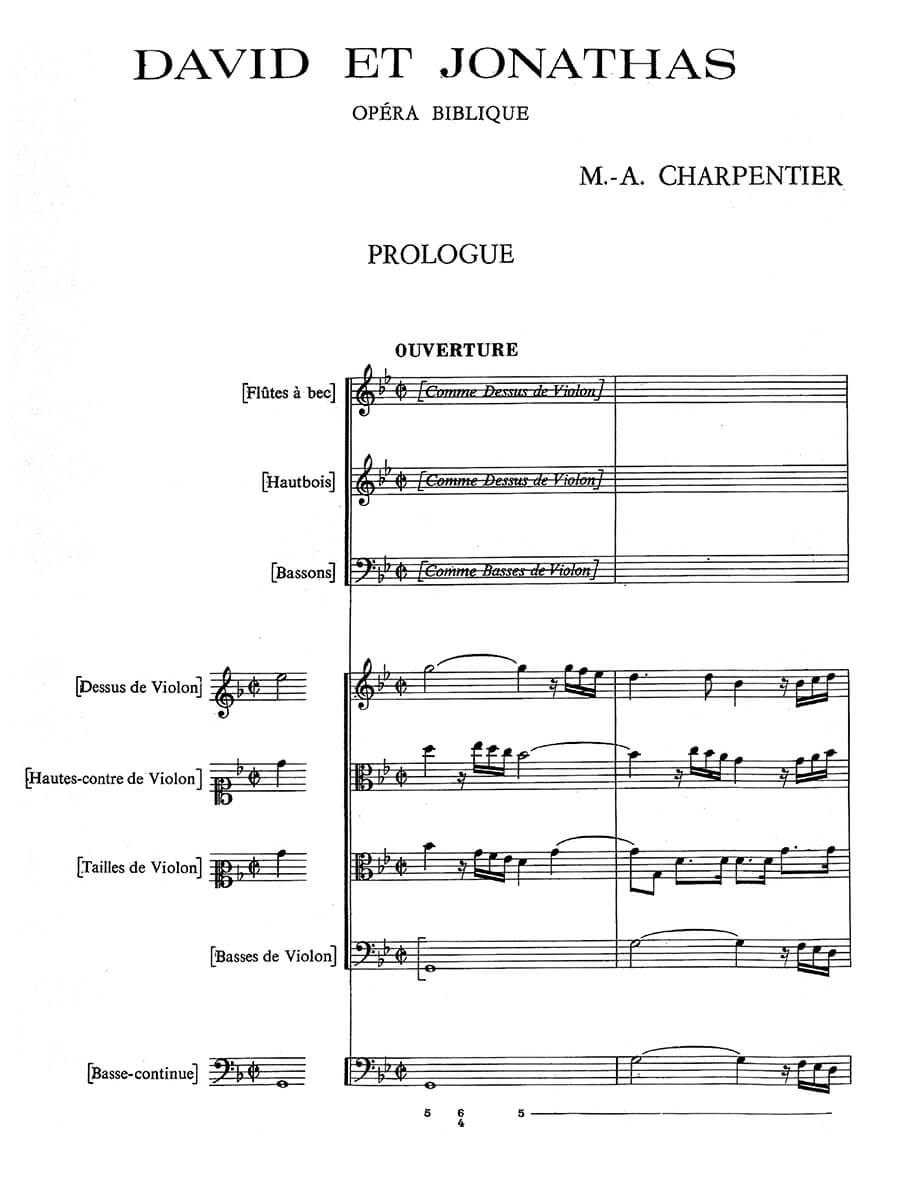David et Jonathas (full opera score with French libretto)
Charpentier, Marc-Antoine
71,00 €
Preface
Marc Antoine Charpentier – David et Jonathas
(b. Paris, approx 1643 – d. Paris, 24 February 1704)
David et Jonathas
Preface
Today the baroque composer Marc-Antoine Charpentier is almost only known for his main theme from the prelude to his Te Deum, since it has been used since 1954 as the fanfare of the Eurovision television broadcast. But Charpentier created many more works, which received little attention during his lifetime, including the sacred opera David et Jonathas. Resignedly he composed his epitaph as a cantata, named Epitaphium Carpentarii, with the following words (H. 474): „I was a musician, respected by the respectable and considered stupid by the stupid. Since the latter are in the majority, I was despised more than I was praised – my music became a small honor and a heavy burden for me. And so, dying, I took away just as little as I, born into the world with nothing, brought.“1
Marc-Antoine Charpentier was born in Paris around 1643. He met the composer Giacomo Carissimi in 1665, while studying painting in Rome, and became his pupil for three years. After returning to Paris in 1670, he found employment at the court of Marie de Lorraine (1615-1688), who maintained an ensemble of musicians and singers. In 1672, Charpentier took over the position of the well-known French composer Jean-Baptiste Lully (1632-1687) and from then on created the music for Moliére’s ballet comedies at the théatre francais. He composed a prologue and a ceremony for Moliére’s The Imaginary Invalid. From 1680, Charpentier directed musical performances at the home of the Princess de Guise in the Marais. From 1684 he was employed as Kapellmeister by the Jesuits at the Church of Saint Louis and the College of Louis-le-Grand. He also worked on theatrical performances (spiritual tragedies) by the Jesuits at the Collége de Clermont. He reached the peak of his career when the Académie francaise and the Académie Royale de Peinture et de Sculpture approached him for occasional works. The Abbey of Port Royal also commissioned motets, lamentations and other sacred works from him. From 1692, Duke Philip of Orleans, the brother of Louis XIV, became his composition student, for whom he wrote the composition theory book Régles de composition. From 1698 until his death on February 24, 1704 in Paris, Charpentier was music teacher and conductor of the children of the Sainte Chapelle (palace chapel) and was allowed to compose music for ceremonial occasions.2 His oeuvre contains sacred works, oratorios, masses, psalms, a Magnificat, four Te Deum, operas, divertissements, pastorals, sonatas, comedies and intermezzi, as well as theoretical writings. More than three quarters of his catalogue of works have been preserved. It consists of 28 volumes with around 550 works that have been recorded in the Hitchcock Index (H) by the musicologist Hugh Wiley Hitchcock.3 The score of David et Jonathas survives through a copy made by André Danica Philidor the Elder, who was a librarian at the court of Versailles. But Charpentier’s posthumous fame quickly faded, and it was not until this century that his works were rediscovered in musicological research and musical practice. …
Read full preface / Das ganze Vorwort lesen> HERE
Score Data
| Edition | Opera Explorer |
|---|---|
| Genre | Opera |
| Printing | Reprint |
| Pages | 403 |
